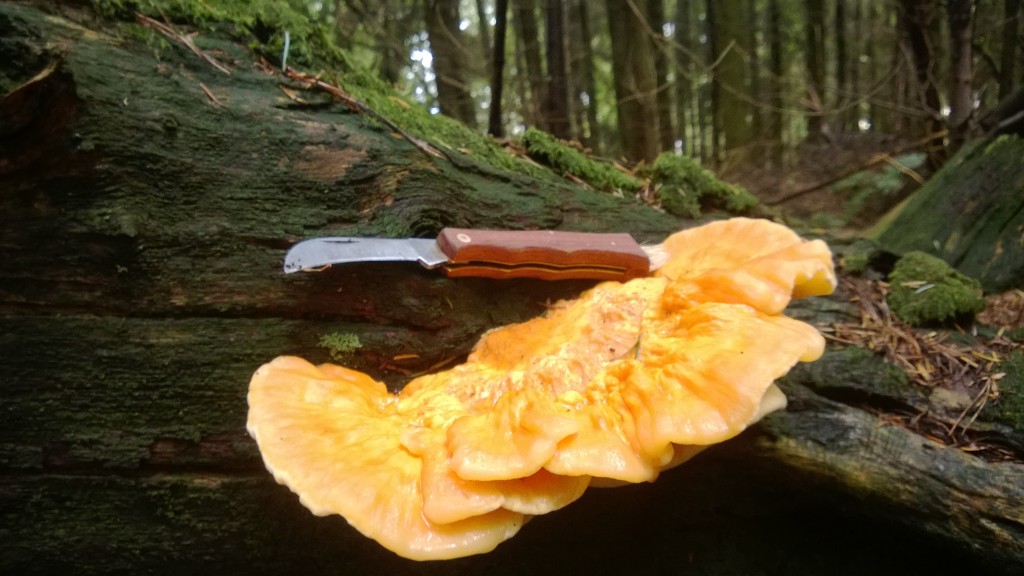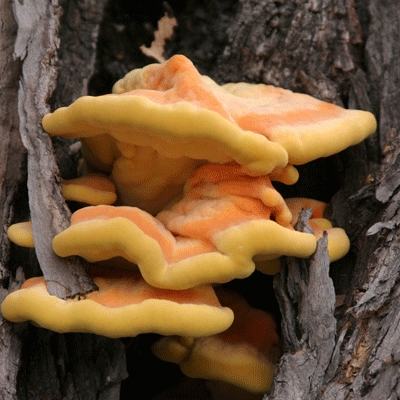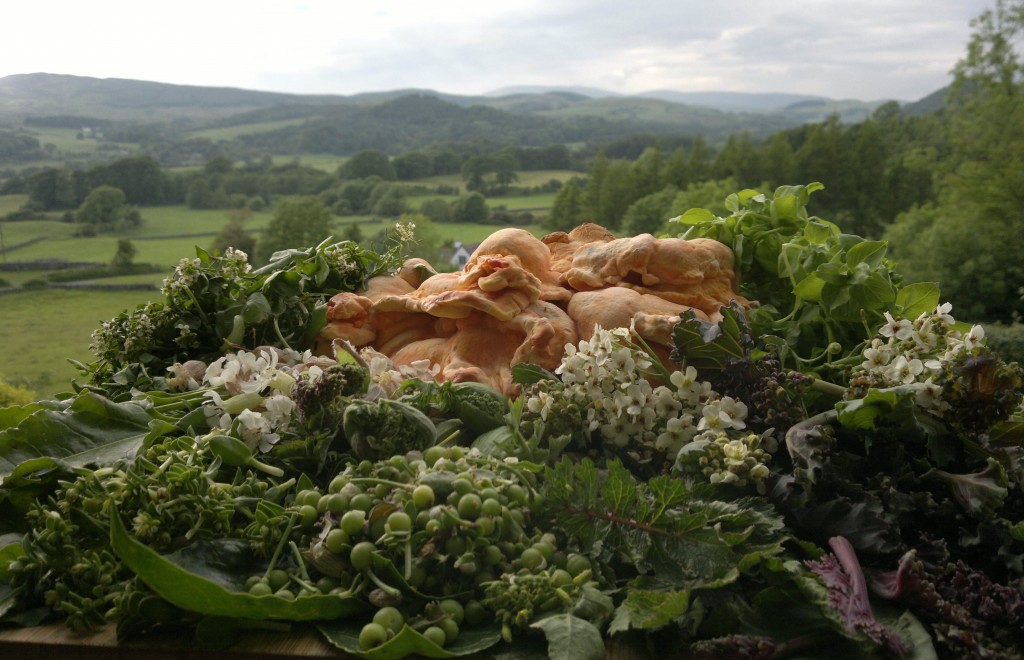Chicken of the Woods – Edibility, Identification, Distribution
Laetiporus sulphureus
- Edibility – 3 – young, tender specimens only. Some people have an adverse reaction, so try a small amount for the first time. Traditional advice is to cube and simmer in salted water for 5 mins before use, and you should certainly do this when trying it for the first time, but I have enjoyed very young tender slices just grilled, fried or barbecued. I suspect many reports of adverse reactions are the result of eating old, past-their-best specimens. Tender cuts are excellent in pies, stews, currys etc – a genuine textural substitute for chicken!
- Identification – 4 – Bright orange, irregular, velvety (never hairy), layered brackets
- Distribution – 2 – enigmatic and occasional – I seldom actively search for them, but tend to look up more than usual in oak woodlands.
- Season – May – October – Often coming in two ‘waves’ – the best wave generally coming in early summer (May/June) then another one in autumn.
- Habitat – Mostly oak trees, standing or fallen. Occasionally other species – many books advise not to eat if growing on yew (which is highly toxic), though I have met a few people who have eaten yew-hosted chicken of the woods for many years with no ill effects. I’m not recommending this though.
- Harvesting – Take only young, tender, moist specimens, or sections of the whole thing. The outer edge of older, dry specimens can remain worthwhile when the rest is past it. It is possible to cut out sections at intervals, keeping fresh food growing on the tree. You may need a ladder or good climbing skills. I know a chef in the highlands who shot one out of a tree!

Older chicken of the woods. Most of this specimen was too dry and hard to digest for the kitchen, but I did dehydrate, powder and add to my seaweed/fungi stock powders.
Suggested links:


